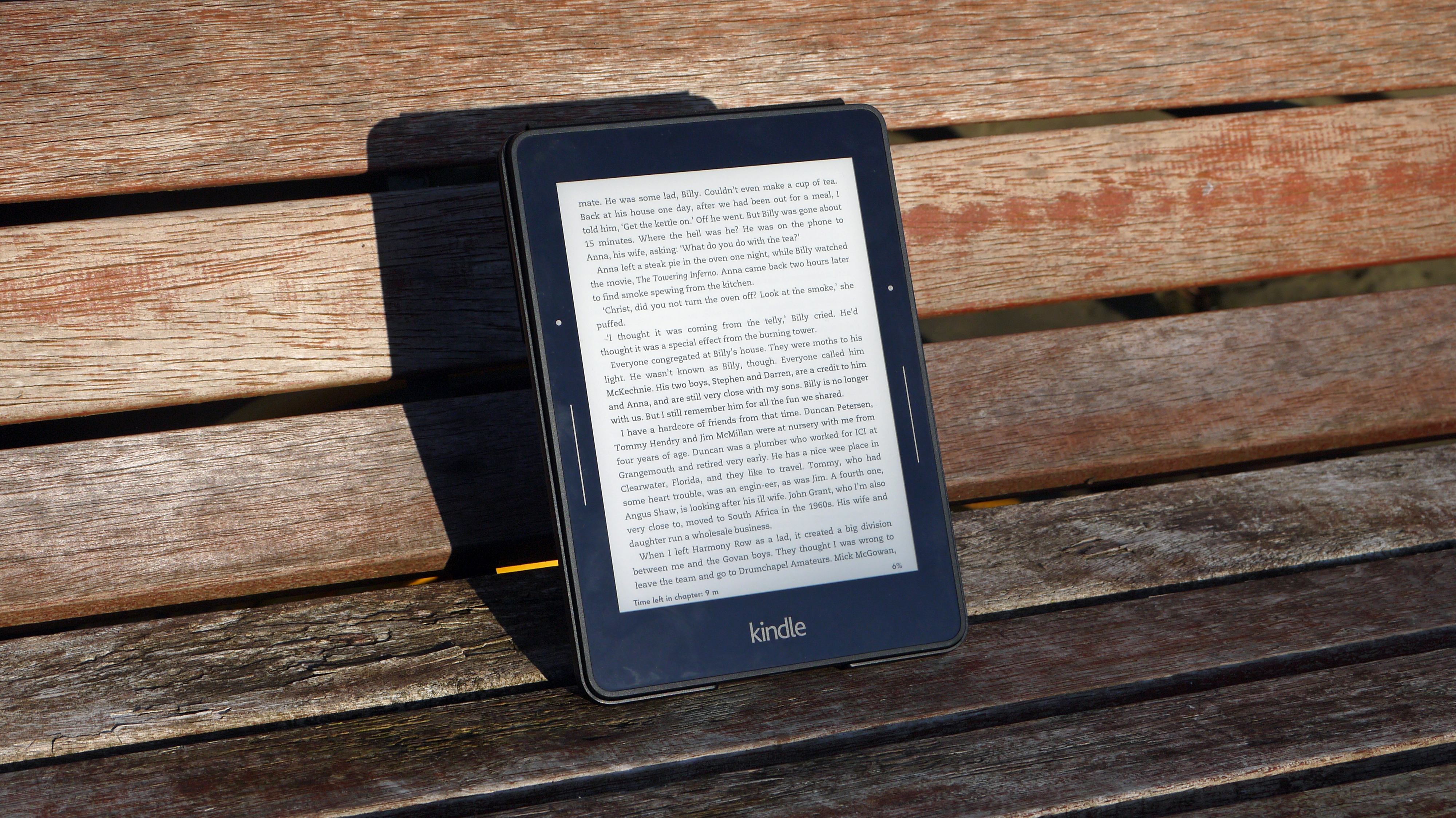TechRadar Verdict
Is it worth the cost? A one off payment is manageable, but it's still a touch too pricey – despite being a brilliant reading experience.
Pros
- +
Nice page turning options
- +
Brilliant screen
- +
Sleek design
Cons
- -
Highly expensive
- -
Interface identical to other models
- -
Buttons slightly hard to hit
Why you can trust TechRadar
Update: Amazon has now discontinued the Kindle Voyage in favor of the Amazon Kindle Oasis line. You can sometimes find these from third-party sellers, but it's a bit more difficult to now find the Kindle Voyage and you may be better off looking at buying the Kindle Oasis or Kindle Paperwhite (2018).
The Amazon Kindle Voyage is a device that's a victim of its own success. While sales of traditional print books were steadily eroded by a growing taste for digital ereaders, the ereader itself is now being usurped by the influx of reading apps on smartphones and tablets.
So what does Amazon do? Make a super-cheap model that allows reading to be more accessible than ever? No: it goes the other way, making a premium model to offer a superior reading experience than its new competitors.
The Kindle Voyage is more compact, sharper and essentially just a step up from any ereader the brand has made since the inception of the technology a few years ago. A flush display makes the device easier to keep clean and carry around, the screen's resolution is the highest it has ever been, and it even comes with an ace origami-style case (at additional cost).

But then again, there's the price: it launched at £169 in the UK, $219 in the US and, well, it's not available in Australia (but should be about AU$250). In the US it is now down to $199 from some retailers and the UK has seen similar discounts, but it's now a lot more difficult to find since Amazon discontinued the Voyage.
- Check out how the Kindle Voyage compares to the other best Kindles
That launch price is about 50% more at least than the next-best device from rivals, and a lot more than the Kindle Paperwhite, which brings, arguably, a lot of the same features.
So what's the big deal? Is this the 'big present' you should be putting on your Christmas list because you love reading so much? Or should you spend a little less and get a similar experience?
Key features
It's hard for Amazon to make a big deal about an ereader when the technology of tablets is starting to munch away at the need for a dedicated device – and the Kindle Fire range is part of the problem.
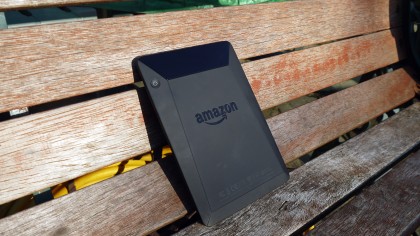
But that doesn't mean it's not a brilliant ereader still, and can still compete as a standalone device simply through adding in functionality that a tablet or smartphone just can't.
Brilliant screen
The main thing to talk about here is the screen. Raised to level off with the bezel, Amazon has created an ereader that feels more design house than something you'd sling into a bag and hope doesn't break.
The resolution has been upped to 300PPI, a huge upgrade from before, and that makes any book or image you care to check out a much nicer experience on the eyeballs.
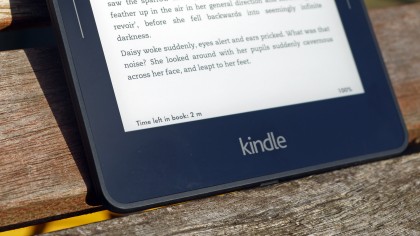
It also has a more uniform backlight - it's not the most important part, but it can really rankle when you're constantly scanning your eyes over a page only to keep noticing a dark spot.
What IS important is the ambient backlight sensor, so if you're moving from day to night (like some sort of literate, short-term time traveller) then the brightness of the screen will adjust accordingly. In tests I found that this was always a little on the dark side, which was annoying - there should be a setting, like on smartphones, to bolster this slightly.
Origami case
It's not really anything to do with the day to day running of your book-reading workout, but this case (which costs a HUGE £55 extra... yet only $60 in the US) is a really nice addition to the party. Not only does it have an iPad-like smart cover that turns the display on when opened, but it protects very well and acts as a stand too.
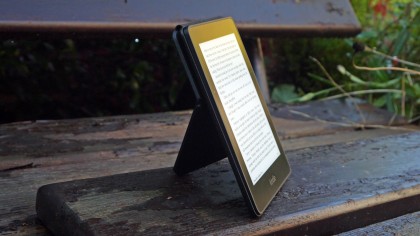
I kept forgetting how to fold it together so the magnets clasped into place (that's right - magnets. No slotting or intricate folding here) but once that mystery was solved it made reading while eating some food a really pleasant experience.
The buttons return
Amazon knows the Kindle is for the commuter, so it makes sense that something called the Voyage should be aimed at making it easier to read a book when you're wedged into another person's armpit.
These are soft-touch buttons – as in they require a level of pressure, but there's no tactile click to them. While they are pressure-sensitive, a haptic buzz will let you know when you've activated the forward or back page turning.
Initially I was a little nonplussed by these, as I'm fine with tapping the screen to shuffle through, which you can do. But by being able to go forward and back on either side of the screen is excellent for commuting, when one hand is used for keeping balance.
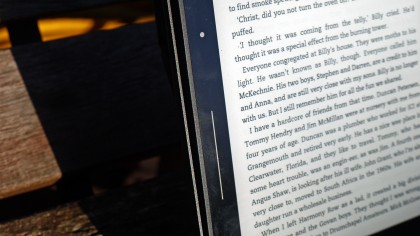
Sadly, these aren't perfect in design. The footprint you can hit is oddly thin, and I kept missing the button. It wasn't a hugely regular thing, and you'll probably adjust to not noticing it in the future, but if they were slightly raised it would make hitting them much easier.
That said, after some digging in the settings (which took a while to find as they're locked within menus contained within menus) there is an option to dial up the sensitivity on the keys.
This improved things immensely, although I still wished that I could have a more tactile experience for when my hands shifted slightly during reading.

Gareth has been part of the consumer technology world in a career spanning three decades. He started life as a staff writer on the fledgling TechRadar, and has grew with the site (primarily as phones, tablets and wearables editor) until becoming Global Editor in Chief in 2018. Gareth has written over 4,000 articles for TechRadar, has contributed expert insight to a number of other publications, chaired panels on zeitgeist technologies, presented at the Gadget Show Live as well as representing the brand on TV and radio for multiple channels including Sky, BBC, ITV and Al-Jazeera. Passionate about fitness, he can bore anyone rigid about stress management, sleep tracking, heart rate variance as well as bemoaning something about the latest iPhone, Galaxy or OLED TV.
